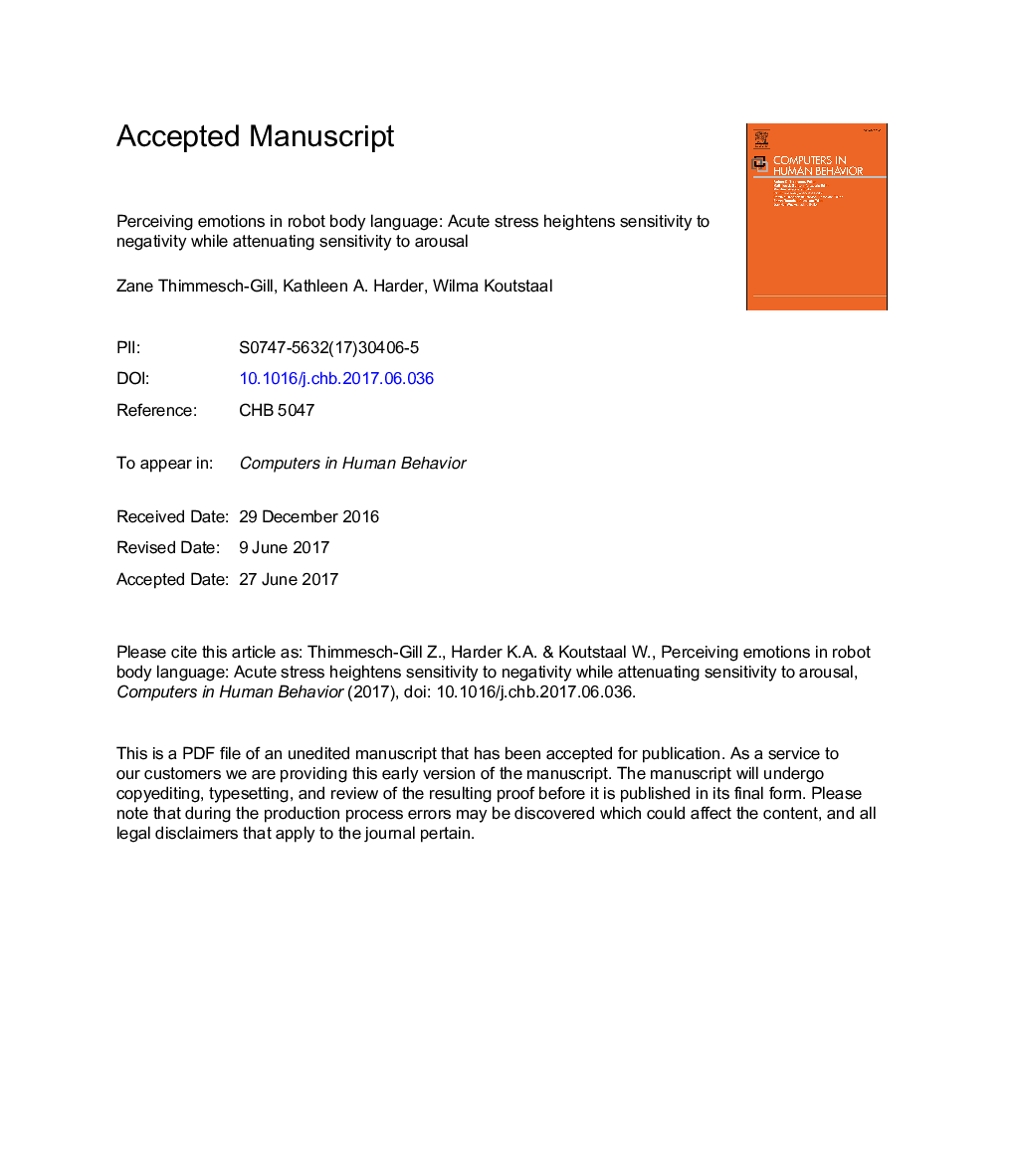| Article ID | Journal | Published Year | Pages | File Type |
|---|---|---|---|---|
| 4937405 | Computers in Human Behavior | 2017 | 38 Pages |
Abstract
Reliance on socioemotional assistive robots is projected to increase, yet little is known about how our ability to perceive their emotional expression is impacted by psychological factors. In high-risk and high-tension domains such as emergency services and healthcare, how might the cognitive and physiological stress we are experiencing influence how we read a humanoid robot's nonverbally conveyed emotions? Using a novel paradigm, we asked participants under experimentally-induced acute stress vs. low stress to evaluate a set of normed emotional body language poses conveyed by a physically-present vs. virtually-instantiated humanoid robot. Participants rated each pose for emotional valence (negativity/positivity) and arousal (calm/excited). Acute stress increased the perception of negative valence in negative high arousal poses, consistent with stress-induced hypervigilance. Surprisingly, stress diminished the perception of arousal in high arousal poses, whereas repeated presentation of the low arousal poses increased perception of arousal. Participants rated emotion similarly for the physically-present vs. virtually-present robot, although positively-valenced poses conveyed by the physical robot were perceived as more positive and more animate. We propose that perceptions of emotional arousal may be especially vulnerable to context effects and misattribution. These findings have implications for how assistive robots can best be designed for high-risk and high-tension contexts.
Keywords
Related Topics
Physical Sciences and Engineering
Computer Science
Computer Science Applications
Authors
Zane Thimmesch-Gill, Kathleen A. Harder, Wilma Koutstaal,
